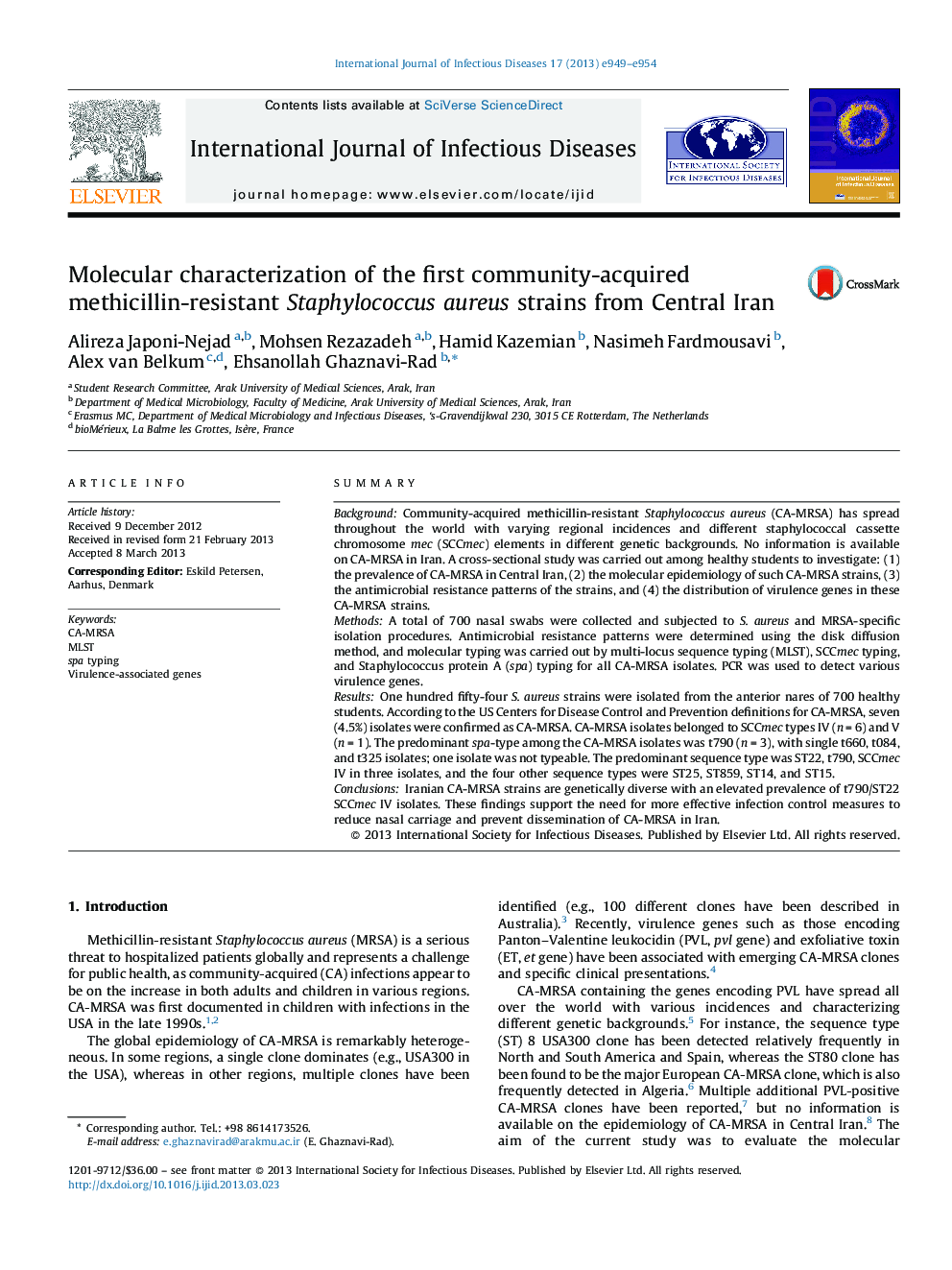| کد مقاله | کد نشریه | سال انتشار | مقاله انگلیسی | نسخه تمام متن |
|---|---|---|---|---|
| 3362934 | 1592080 | 2013 | 6 صفحه PDF | دانلود رایگان |

SummaryBackgroundCommunity-acquired methicillin-resistant Staphylococcus aureus (CA-MRSA) has spread throughout the world with varying regional incidences and different staphylococcal cassette chromosome mec (SCCmec) elements in different genetic backgrounds. No information is available on CA-MRSA in Iran. A cross-sectional study was carried out among healthy students to investigate: (1) the prevalence of CA-MRSA in Central Iran, (2) the molecular epidemiology of such CA-MRSA strains, (3) the antimicrobial resistance patterns of the strains, and (4) the distribution of virulence genes in these CA-MRSA strains.MethodsA total of 700 nasal swabs were collected and subjected to S. aureus and MRSA-specific isolation procedures. Antimicrobial resistance patterns were determined using the disk diffusion method, and molecular typing was carried out by multi-locus sequence typing (MLST), SCCmec typing, and Staphylococcus protein A (spa) typing for all CA-MRSA isolates. PCR was used to detect various virulence genes.ResultsOne hundred fifty-four S. aureus strains were isolated from the anterior nares of 700 healthy students. According to the US Centers for Disease Control and Prevention definitions for CA-MRSA, seven (4.5%) isolates were confirmed as CA-MRSA. CA-MRSA isolates belonged to SCCmec types IV (n = 6) and V (n = 1). The predominant spa-type among the CA-MRSA isolates was t790 (n = 3), with single t660, t084, and t325 isolates; one isolate was not typeable. The predominant sequence type was ST22, t790, SCCmec IV in three isolates, and the four other sequence types were ST25, ST859, ST14, and ST15.ConclusionsIranian CA-MRSA strains are genetically diverse with an elevated prevalence of t790/ST22 SCCmec IV isolates. These findings support the need for more effective infection control measures to reduce nasal carriage and prevent dissemination of CA-MRSA in Iran.
Journal: International Journal of Infectious Diseases - Volume 17, Issue 11, November 2013, Pages e949–e954